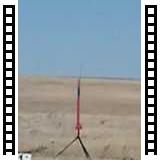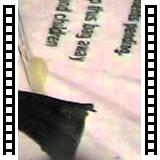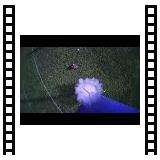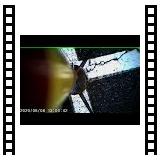Categories
Rocketry Videos
- Accessories
- Books
- Clubs
- Companies
- Components
- Construction
- Contests
- Country
- Education
- Events
- Facilities
- Flights
- Groups
- H90
- History
- Kits
- Launch/Starter Sets
- Magazines
- Media
- Motors
- Movies and TV
- Museums
- News
- Other
- Parts
- Plans
- Projects
- Recovery
- Research
- Software
- Style
- Supplies
- Techniques
- Technology
- Tests
- Tutorials
- Videos
Highest Rated

K Motor Launch Pueblo CO 1-17-2009 (2009-01-19)Jason Chamberlin of Pueblo West Colorado flies his High Power Rocket on a K 600 Animal Motor Works White Wolf Motor to over 5,000 feet Above Ground Level (AGL). [View]

Launch Onboard with Data Overlay (2011-02-17)A proof of concept for data overlay videos. This was our October 2010 launch from onboard the rocket with graphs and displays of the altitude and velocity from the simulation. An HD version with ... [View]

Quad Pod II with an F10 Motor (2008-08-11)This is the fourth launch of the Quad Pod II gyro-controlled rocket. This launch used an Apogee F10 motor. [View]

Ryerson Rocketry Club March 2010 (2010-06-13)Launching for L1 rockets in March. Armen Meras, Cindy Hok, Clayton Wozney, Gira Asadinik, Jared Nicholson, Jenna Wilkinson, Martin Marciniak, Paul Marji [View]

AeroTech Initiator Rocket Launch 4-29-2012 (2012-04-29)AeroTech Initiator Rocket Launch April 29, 2012. First launch. The rocket was powered by an AeroTech F50-6T. The weather was perfect. The launch was perfect and the F50 kicked the rocket off the ... [View]

Rocket flies High Power on an impressive Smokey Sam motor (2009-10-16)Steve's rocket had a nice vertical trajectory during the 2009 Oktoberfest at Northern Colorado Rocketry (NCRocketry.com). He flew his rocket on a Cesaroni "H 143." The engine had an exaust of black ... [View]

Build a Rogallo Wing, Rocket boosted glider part 6 (2011-03-29)Plans for this glider are at: https://www.apogeerockets.com/Advanced_Construction_Videos/Rocketry_Video_59 Part 6 of 7. This video shows the construction sequence for making a Rogallo wing ... [View]

LDRS 28 on board rocket video (2009-07-06)On Board rocket video from LDRS 28 in Potter New York [View]

UBRocketry Fall 2010 Launch #1 (2010-10-14)Our first rocket launch of the semester, launching smaller rockets near campus. [View]

Pack 1346 Rocket Derby 2010 with rocket cam video and mega launcher (2010-07-25)Some short clips and on-board model rocket video from the July 17th Pack 1346 model rocket derby. Over a hundred rockets were launched! [View]

More Highly-Rated VideosList of the highest-rated rocketry videos. [View]
Most Popular

MAC Performance Rocketry 4-Inch Black Fly (2018-07-07)HED with redundant Missile Works RRC3 altimeters reporting 6,921' and 6,930'. Missile Works T3 GPS tracker. [View]

LDRS 38 - J316 pink motor in Karen Gloer's Ms. Cletus (2019-09-02)On Sunday, September 1, 2019, at LDRS 38 on the rocket pasture in Argonia, KS, Karen Gloer flew her "Ms. Cletus" (a Loc Precision Big Cletus with a great paint job) on a J316. [View]

Aerotech Arreauxbee Hi model rocket kit (2019-12-12)https://www.apogeerockets.com/Rocket-Kits/Skill-Level-3-Model-Rocket-Kits/Arreauxbee-Hi This is a short introduction and launch video of the Arreauxbee-Hi model rocket kit from Aerotech. The rocket ... [View]

Estes Sahara 1st Launch (E16-4) (2019-08-28)Chute packing failure. [View]

Estes Astrocam Onboard Video, Old astrocam w/USBCam and Newly released Estes Astrocam 2020 at Target (2020-08-09)Two flights, Vintage Astrocam has a $7 1080p USB Camera from China - unknown brand, but can do night vision and motion sensing (records automatically). Astrocam 2020 released exclusively at Target. ... [View]

Orbital Transport Midway B6 2 Mark Laiuppa HD (2018-03-09)Orbital Transport "Midway" B6-2 Mark Laiuppa 2018-02-10 Video by Jimmy Yawn From the official NEFAR website [View]

Bryce Boy Launching the Mammoth Estes Rocket - First Launch, 3/11/17 (2017-03-12)Bryce chose the Mammoth Estes rocket as one of his gifts for his 10th birthday (2/17/17). Today, though a bit windy, we went forth with the launch. This was a huge step for us, being that formerly, ... [View]

Estes Bomarc Clone at CMASS 11-5-11 (2011-11-06)Estes Bomarc Clone at CMASS rocket launch 11-5-11 I forgot to put in nose weight so it did a big 20ft loop and plowed into the ground. Some damage, but repairable. [View]

Estes mammoth on a CTI G107 (2018-04-07)June 2017, smash, MMAR, JMRC joint launch [View]

Slow Motion Launches (2010-08-23)Several launches of Estes, Quest, Aerotech, and other models in slow motion from a Casio [View]

More Popular VideosList of the most popular rocketry videos. [View]
Sponsored Ads
 |
 |











